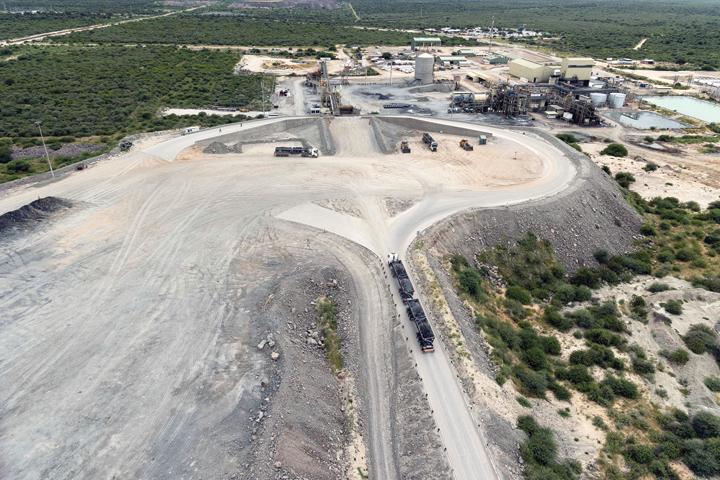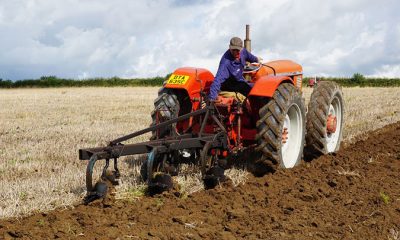The uncertainty of getting the next meal in Botswana
Households representing more than half of Botswana’s population-mostly residing in rural areas- do not know where their next meal will come from, but neither do they take into consideration the quality and/or quantity of the food they consume.
This is according to the latest Prevalence of Food Insecurity in Botswana report which was done for the 2018/19 period and represents the state of food insecurity data even to this time.
The Prevalence of Food Insecurity was released by Statistics Botswana and it released results with findings that the results show that at national level 50.8 percent of the population in Botswana was affected by moderate to severe food insecurity in 2018/19, while 22.2 percent of the population was affected by severe food insecurity only.
According to the report, this translates to 27 percent of the population being food secure that is to say having adequate access to food in both quality and quantity. According to Statistician General, Burton Mguni, when explaining how the food data was compiled, Food and Agriculture Organization of the United Nations (FAO), is custodian of the “Prevalence of Undernourishment (PoU)” and “Prevalence of moderate or severe food insecurity in the population based on the Food Insecurity Experience Scale (FIES)” SDG indicators, for leading FIES data analysis and the resultant capacity building.
“The FIES measures the extent of food insecurity at the household or individual level. The indicator provides internationally comparable estimates of the proportion of the population facing moderate to severe difficulties in accessing food. The FIES consists of eight brief questions regarding access to adequate food, and the questions are answered directly with a yes/no response. It (FIES) complements the existing food and nutrition security indicators such as Prevalence of Undernourishment.
According to the FIES, with increasing severity, the quantity of food consumed decreases as portion sizes are reduced and meals are skipped. At its most severe level, people are forced to go without eating for a day or more. The scale further reveals that the household’s experience of food insecurity may be characterized by uncertainty and anxiety regarding food access and compromising the quality of the diet and having a less balanced and more monotonous diet,” says Mguni.
The 50.8 percent of the population in Botswana which was affected by moderate to severe food insecurity are characterized as people experiencing moderate food insecurity and face uncertainties about their ability to obtain food. These people have been forced to compromise on the quality and/or quantity of the food they consume according to the report on food insecurity.
Those who experience severe food insecurity, the 22.2 percent of the population, are people who have typically run out of food and, at worst, gone a day (or days) without eating. According to the statistics, rural area population experienced moderate to severe food insecurity at 65 percent while urban villages were at 46.60 percent and cities/town were at 31.70 percent. Those experiencing the most extreme and severe insecurity were at rural areas making 33.10 percent while urban villages and towns were at 11.90 percent and 17.50 respectively.
According to a paper compiled by Sirak Bahta, Francis Wanyoike, Hikuepi Katjiuongua and Davis Marumo and published in December 2017, titled ‘Characterization of food security and consumption patterns among smallholder livestock farmers in Botswana,’ over 70 percent of Botswana’s population reside in rural areas, and majority (70%) relies on traditional/subsistence agriculture for their livelihoods.
The study set out to characterize the food security situation and food consumption patterns among livestock keepers in Botswana. “Despite the policy change, challenges still remain in ensuring that all persons and households have access to food at all times. For example, during an analysis of the impacts of rising international food prices for Botswana, BIDPA reported that food prices tended to be highest in the rural areas already disadvantaged by relatively low levels of income and high rates of unemployment,” said the study.
According to the paper, about 9 percent of households were found to be food insecure and this category of households included 6 percent of households that ranked poorly and 3 percent that were on the borderline according to the World Food Programme’s (WFP) definition of food security.
Media reports state that the World Bank has warned that disruption to production and supply chains could ‘spark a food security crisis’ in Africa, forecasting a fall in farm production of up to 7 percent, if there are restrictions to trade, and a 25 percent decline in food imports.
Food security in Botswana or food production was also attacked by the locust pandemic which swept out this country’s vegetation and plants. The locust is said to have contributed to 25 percent loss in production.
Business
LLR transforms from Company to Group reporting

Botswana Stock Exchange listed diversified real estate company, Letlole La Rona Limited (“LLR” or “the Company” or “the Group”), posted its first set of group financial statements which comprise the Company and Group consolidated accounts, which show strong financial performance for the six months ended 31 December 2023, with improvements across all key metrics.
The Company commenced the financial year with the appointment of a Deputy Chairperson, Mr Mooketsi Maphane, in order to bolster its governance and enhance leadership continuity through the development of a Board and Executive Management Succession Plan.
At operational level, LLR increased its shareholding in Railpark Mall from 32.79% to 57.79% and proudly took over the management of this prime asset.
The CEO of LLR, Ms Kamogelo Mowaneng commented “During the period under review, our portfolio continued to perform strongly, with improvements across all key metrics as a result of our ongoing focus on portfolio growth and optimisation.
“We are pleased to report a successful first half of the 2024 financial year, where we managed to not only grow the portfolio through strategic acquisitions and value accretive refurbishments but also recycled capital through the disposal of Moedi House as well as the ongoing sale of section titles at Red Square Apartments. The acquisition of an additional 25% stake in JTTM Properties significantly uplifted the value of our investment portfolio to P2.0 billion at a Group level. Our investment portfolio was further differentiated by the quality of our tenant base, as demonstrated by above market occupancy levels of 99.15% and strong collections of above 100% for the period”.
The growth in contractual revenue of 9% from the prior year’s P48.0 million to the current year P52.2 million, increased income from Railpark Mall, coupled with high collection rates, has enabled the company to declare a distribution of 9.11 thebe per linked unit, which is in line with the prior year.
In line with its strategic pillars of ‘Streamlined and Expanded Botswana Portfolio’ as well as ‘Quality African Assets’, the Group continuously monitors the performance of its investments to ensure that they meet the targeted returns.
“The Group continues to explore yield accretive opportunities for balance sheet growth and funding options that can be deployed to finance that growth” further commented the CEO of LLR Ms Kamogelo Mowaneng.
Ms Mowaneng further thanked the Group’s stakeholders for their continued support and stated that they look forward to unlocking further value in the Group.
Business
Botswana’s Electricity Generation Dips 26.4%
The Botswana Power Corporation (BPC) has reported a significant decrease in electricity generation for the fourth quarter of 2023, with output plummeting by 26.4%. This decline is primarily attributed to operational difficulties at the Morupule B power plant, as per the latest Botswana Index of Electricity Generation (IEG) released recently.
Local electricity production saw a drastic reduction, falling from 889,535 MWH in the third quarter of 2023 to 654,312 MWH in the period under review. This substantial decrease is largely due to the operational challenges at the Morupule B power plant. Consequently, the need for imported electricity surged by 35.6% (136,243 MWH) from 382,426 MWH in the third quarter to 518,669 MWH in the fourth quarter. This increase was necessitated by the need to compensate for the shortfall in locally generated electricity.
Zambia Electricity Supply Corporation Limited (ZESCO) was the principal supplier of imported electricity, accounting for 43.1% of total electricity imports during the fourth quarter of 2023. Eskom followed with 21.8%, while the remaining 12.1, 10.3, 8.6, and 4.2% were sourced from Electricidade de Mozambique (EDM), Southern African Power Pool (SAPP), Nampower, and Cross-border electricity markets, respectively. Cross-border electricity markets involve the supply of electricity to towns and villages along the border from neighboring countries such as Namibia and Zambia.
Distributed electricity exhibited a decrease of 7.8% (98,980 MWH), dropping from 1,271,961 MWH in the third quarter of 2023 to 1,172,981 MWH in the review quarter.
Electricity generated locally contributed 55.8% to the electricity distributed during the fourth quarter of 2023, a decrease from the 74.5% contribution in the same quarter of the previous year. This signifies a decrease of 18.7 percentage points. The quarter-on-quarter comparison shows that the contribution of locally generated electricity to the distributed electricity fell by 14.2 percentage points, from 69.9% in the third quarter of 2023 to 55.8% in the fourth quarter. The Morupule A and B power stations accounted for 90.4% of the electricity generated during the fourth quarter of 2023, while Matshelagabedi and Orapa emergency power plants contributed the remaining 5.9 and 3.7% respectively.
The year-on-year analysis reveals some improvement in local electricity generation. The year-on-year perspective shows that the amount of distributed electricity increased by 8.2% (88,781 MWH), from 1,084,200 MWH in the fourth quarter of 2022 to 1,172,981 MWH in the current quarter. The trend of the Index of Electricity Generation from the first quarter of 2013 to the fourth quarter of 2023 indicates an improvement in local electricity generation, despite fluctuations.
The year-on-year analysis also reveals a downward trend in the physical volume of imported electricity. The trend in the physical volume of imported electricity from the first quarter of 2013 to the fourth quarter of 2023 shows a downward trend, indicating the country’s continued effort to generate adequate electricity to meet domestic demand, has led to the decreased reliance on electricity imports.
In response to the need to increase local generation and reduce power imports, the government has initiated a new National Energy Policy. This policy is aimed at guiding the management and development of Botswana’s energy sector and encouraging investment in new and renewable energy. In the policy document, Minister of Mineral Resources, Green Technology and Energy Security Lefoko Moagi stated that the policy aims to transform Botswana from being a net energy importer to a self-sufficient nation with surplus energy for export into the region. Moagi expressed confidence that Botswana has the potential to achieve self-sufficiency in electric power supply, given the country’s readily available energy resources such as coal and renewable sources.
Business
MMG acquires Khoemacau in a transaction valued at P23Bn

MMG Limited, the Hong Kong-based mining company specializing in base metals, has successfully concluded the acquisition of Khoemacau Copper Mine, a state-of-the-art, world-class copper asset nestled in the northwest of Botswana.
On Monday, MMG announced that the acquisition of Khoemacau Mine in Botswana was finalized on 22nd March 2024. “This acquisition enriches the company’s portfolio with a top-tier, transformative growth project and signifies a monumental milestone in the Company’s journey,” MMG communicated in an official statement published on the Hong Kong Stock Exchange.
Upon completion of the acquisition, MMG remitted to the Sellers an Aggregate Consideration of approximately US$1,734,657,000 (over P23 billion), a sum subject to potential adjustments post-Completion.
In addition to the Aggregate Consideration, MMG, in accordance with the Agreement, advanced an aggregate amount of approximately US$348,580,000 (over P4.5 billion) as the Aggregate Debt Settlement Amount, to settle certain debt balances of the Target Group (Cuprous Capital/Khoemacau).
On November 21, 2023, Khoemacau announced that the shareholders of its parent company [Cuprous Capital] had agreed to sell 100% of their interests to MMG Limited.
MMG is a global resources company that mines, explores, and develops copper and other base metals projects on four continents. The company is headquartered in Melbourne, Australia, and has a significant shareholder, China Minmetals Corporation, which is China’s largest metals and minerals group owned by the Government of the People’s Republic of China.
On December 22, 2023, Khoemacau Copper Mining (Pty) Ltd received the approval from the Minister of Minerals and Energy of Botswana regarding the transfer of a controlling interest in the Project Licenses and Prospecting Licenses associated with the Khoemacau Copper Mine, a result of the Acquisition.
The Botswana Competition & Consumer Authority (CCA) on January 29, 2024, notified the market that it had given its approval for the takeover of Khoemacau Copper Mining by MMG Limited.
On January 29, 2024, the CCA issued a merger decision to the market, stating that after conducting all necessary assessments, it was ready to proceed.
The Competition Authority affirmed that the structure of the relevant market would not significantly change upon implementation of the proposed merger as the proposed transaction is not likely to result in a substantial lessening of competition, nor endanger the continuity of service in the market of mining of copper and silver ores and the production, and sale or supply of copper concentrate in Botswana.
Furthermore, the CCA stated that the proposed merger would not have any negative impact on public interest matters in Botswana as per the provisions of section 52(2) of the Competition Act 2018.
Earlier this month, Minister of Minerals & Energy, Lefoko Maxwell Moagi, informed parliament that his Ministry was endorsing the Khoemacau acquisition by MMG Limited. He noted that not only was the company acquiring the existing operation but also committing to an expansion program that would cost over $700 million to double production, create more jobs for Batswana, and increase taxes and royalties paid to the Government.



